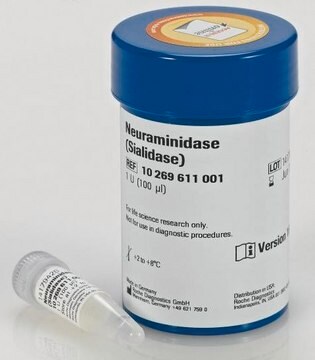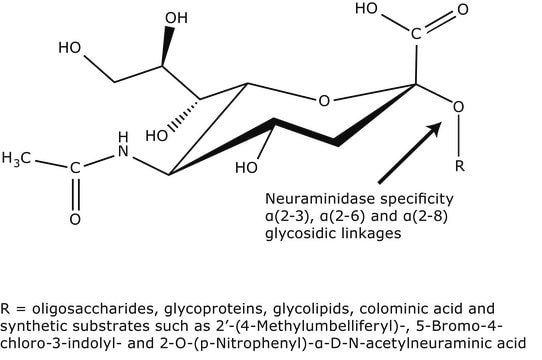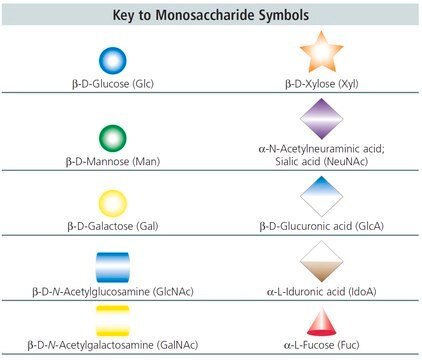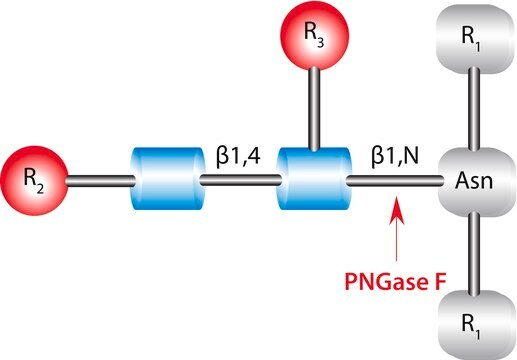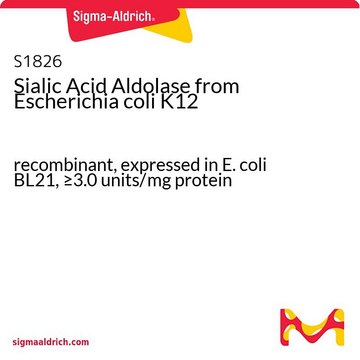N3786
Neuraminidasi
Proteomics Grade, suitable for MALDI-TOF MS
Sinonimo/i:
Acil-neuraminil idrolasi, Sialidasi
About This Item
Prodotti consigliati
Forma fisica
lyophilized powder
Livello qualitativo
Qualità
Proteomics Grade
Attività specifica
≥25 U/vial
Compatibilità
suitable for MALDI-TOF MS
Temperatura di conservazione
2-8°C
Cerchi prodotti simili? Visita Guida al confronto tra prodotti
Applicazioni
Confezionamento
Qualità
Definizione di unità
Stato fisico
I componenti del kit sono disponibili anche separatamente
- N3536Neuraminidase 5X Reaction Buffer 1.5 mLSDS
Prodotti correlati
Avvertenze
Danger
Indicazioni di pericolo
Consigli di prudenza
Classi di pericolo
Resp. Sens. 1
Codice della classe di stoccaggio
11 - Combustible Solids
Classe di pericolosità dell'acqua (WGK)
WGK 1
Punto d’infiammabilità (°F)
Not applicable
Punto d’infiammabilità (°C)
Not applicable
Certificati d'analisi (COA)
Cerca il Certificati d'analisi (COA) digitando il numero di lotto/batch corrispondente. I numeri di lotto o di batch sono stampati sull'etichetta dei prodotti dopo la parola ‘Lotto’ o ‘Batch’.
Possiedi già questo prodotto?
I documenti relativi ai prodotti acquistati recentemente sono disponibili nell’Archivio dei documenti.
I clienti hanno visto anche
Articoli
Glycan Sequencing Using Exoglycosidases
Il team dei nostri ricercatori vanta grande esperienza in tutte le aree della ricerca quali Life Science, scienza dei materiali, sintesi chimica, cromatografia, discipline analitiche, ecc..
Contatta l'Assistenza Tecnica.